On Tuesday, Democrats in OK-5 finalized Kendra Horn as their House candidate for this November’s midterm election. In a normal year, Oklahoma’s 5th congressional district would not be competitive. This R+10 district – composed primarily of Oklahoma City – has been represented by a Republican since 1975, and voted for Trump by 13 points in 2016. Oklahoma City is one of America’s most conservative cities, and incumbent Steve Russell (R) won both of his previous elections by over 20 points. But 2018 isn’t shaping-up to be a normal year for Republicans. In the wake of several stunning special election defeats, it’s clear that many Republicans from reliably conservative areas could be in danger. This may be especially true in Oklahoma, where Governor Mary Fallin – who represented OK-5 herself, before becoming Governor – has become toxically unpopular.
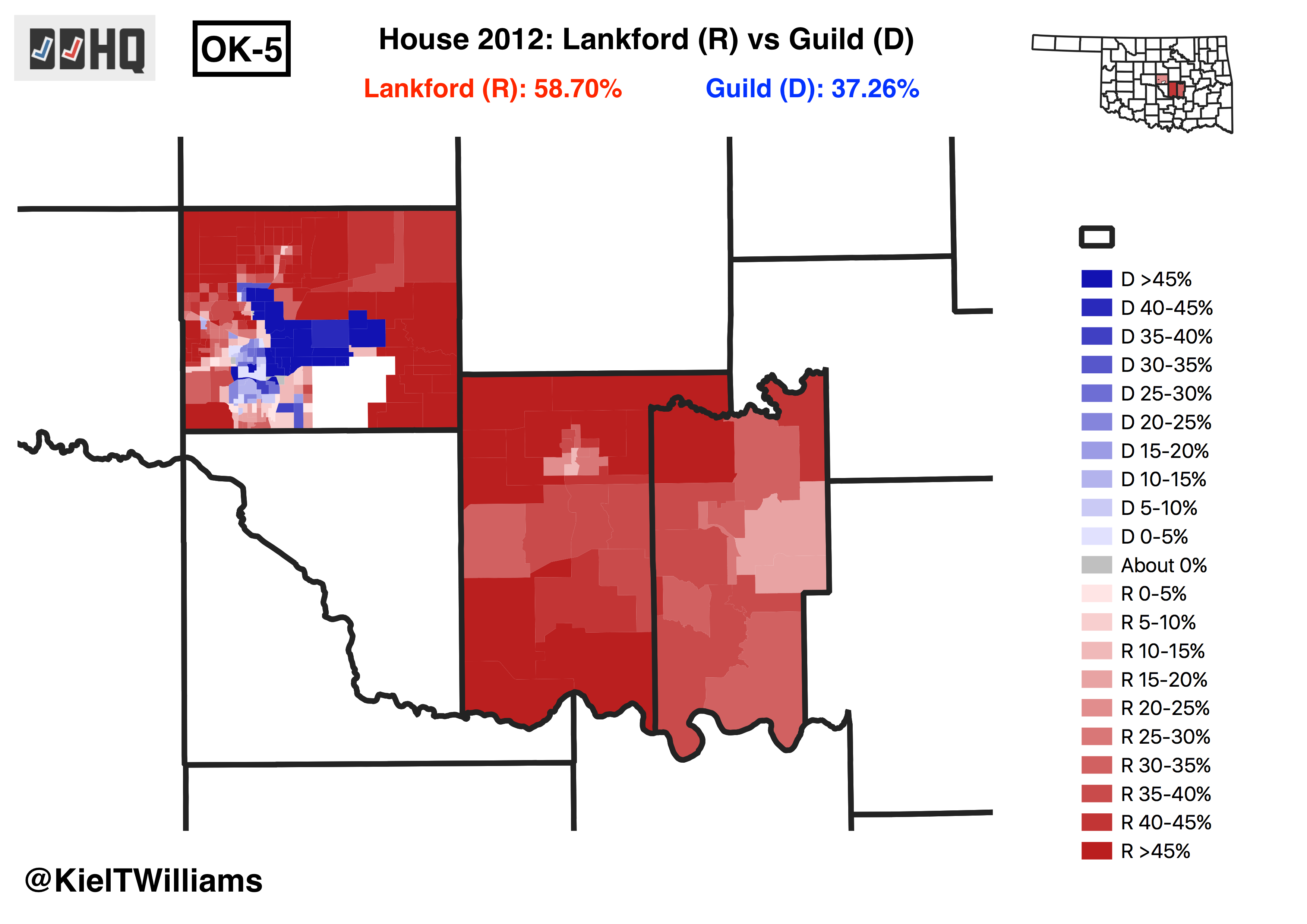
The 2012 House race in OK-5 provides a reasonable baseline for thinking about the district. Now-Senator James Lankford (R) defeated retired professor Tom Guild (D) by 21 points, on his way to a second term in the House. Guild – like most Democrats here – was able to win in downtown Oklahoma City. But he was demolished in the outlying areas around the city, and in the adjoining rural counties of Pottawatomie and Seminole. This map highlights the fundamental challenge for Democrats in this district: to win here, you need to win the area surrounding the city. And that’s a very difficult feat for a Democrat on terrain this conservative.

The 2012 presidential map in this district tells a similar story. Obama’s support was confined to the heart of Oklahoma City, and Guild wasn’t a strong enough candidate to inspire any ticket-splitting.
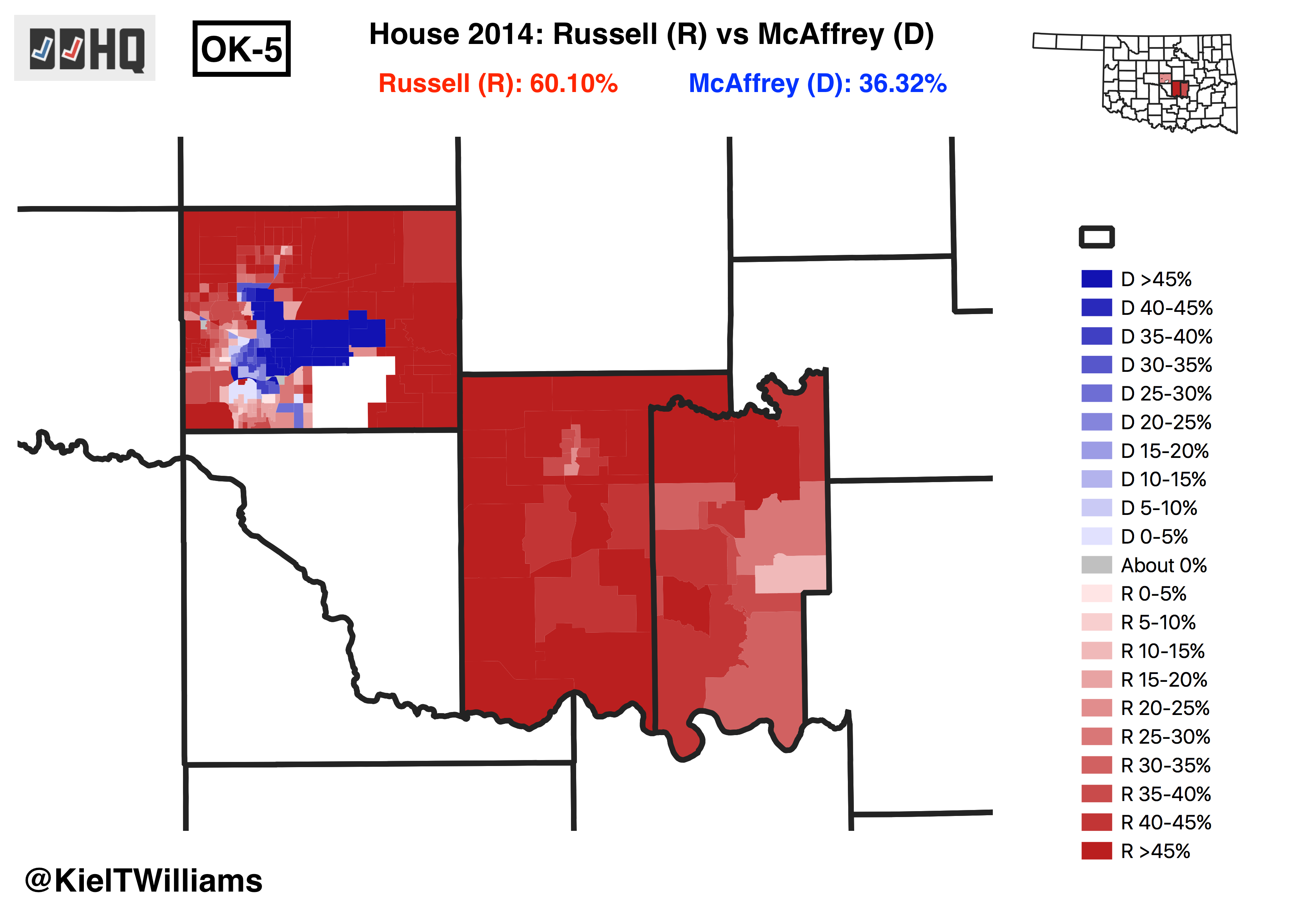
The 2014 House election demonstrates the district’s consistent support for Republicans. James Lankford retired from the House to run for the Senate seat being vacated by Tom Coburn (R), and decorated Army veteran Steve Russell emerged from a crowded GOP primary to win the general election against state senator Al McAffrey (D). Riding on the back of the 2014 GOP wave, Russell actually improved on Lankford’s already-impressive 2012 performance, turning the Oklahoma City suburbs an even darker shade of red.
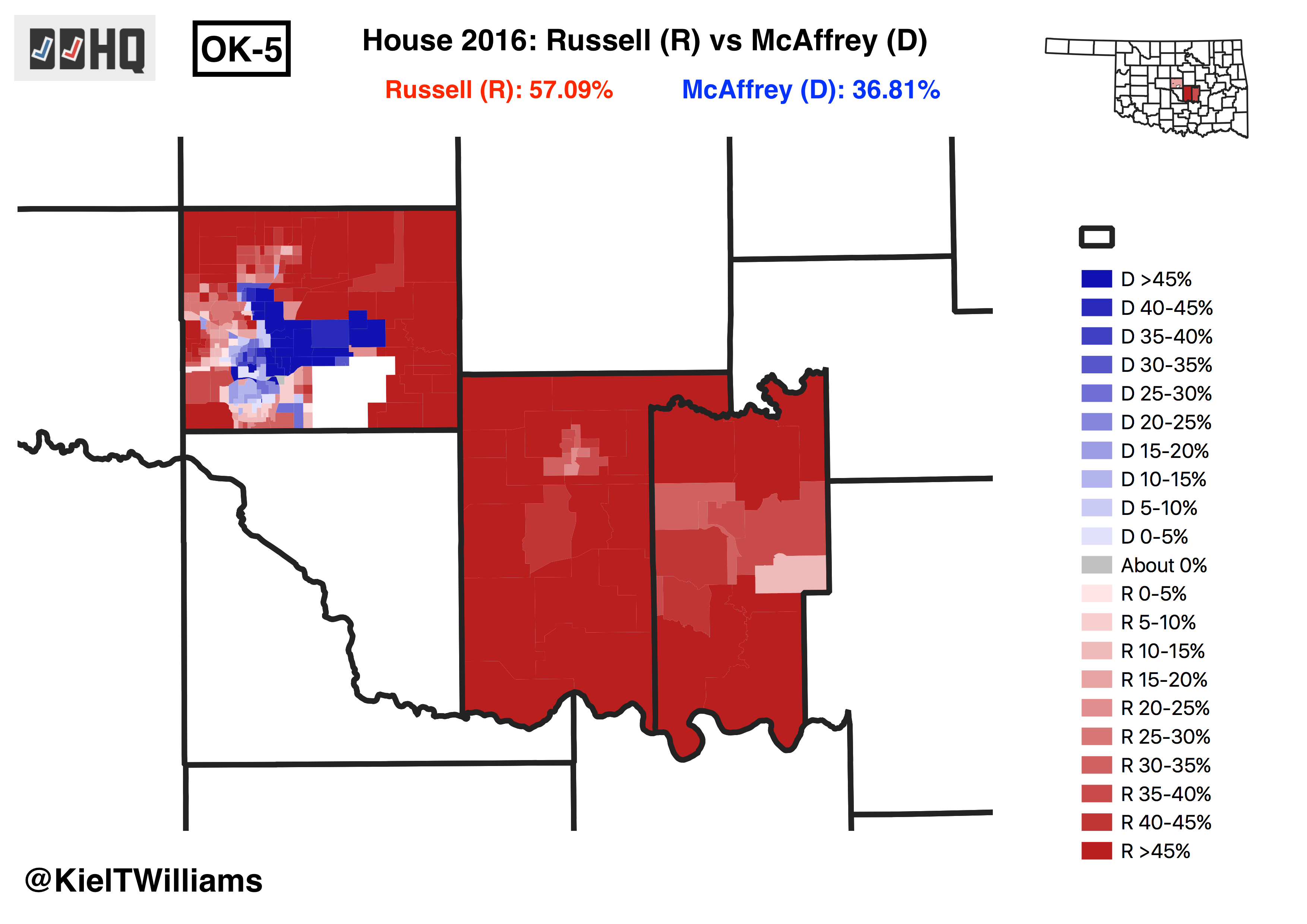
2016 is when warning signs – albeit small ones – begin appearing in the data for Republicans. While Russell easily won reelection in a rematch with Al McAffrey, his performance weakened in some of the outlying areas around Oklahoma City.
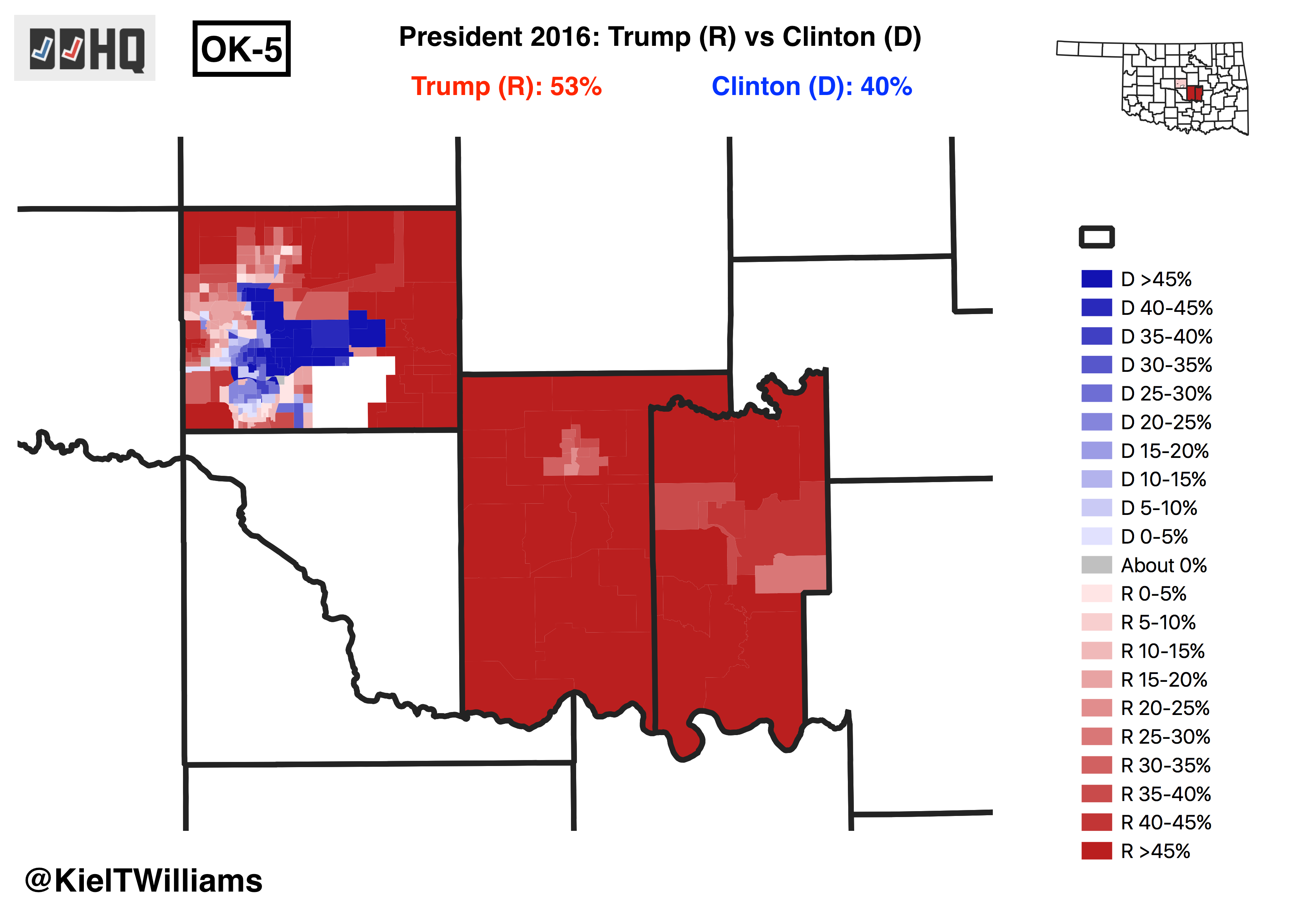
The real canary-in-the-coal-mine was Trump’s 2016 performance in the district. While Trump still carried the district by a 13-point margin, this was a notable decline from Romney’s 18-point victory here in 2012. And Trump exhibited noticeable weakness – at least for a Republican in OK-5 – in the precincts just north of the city.
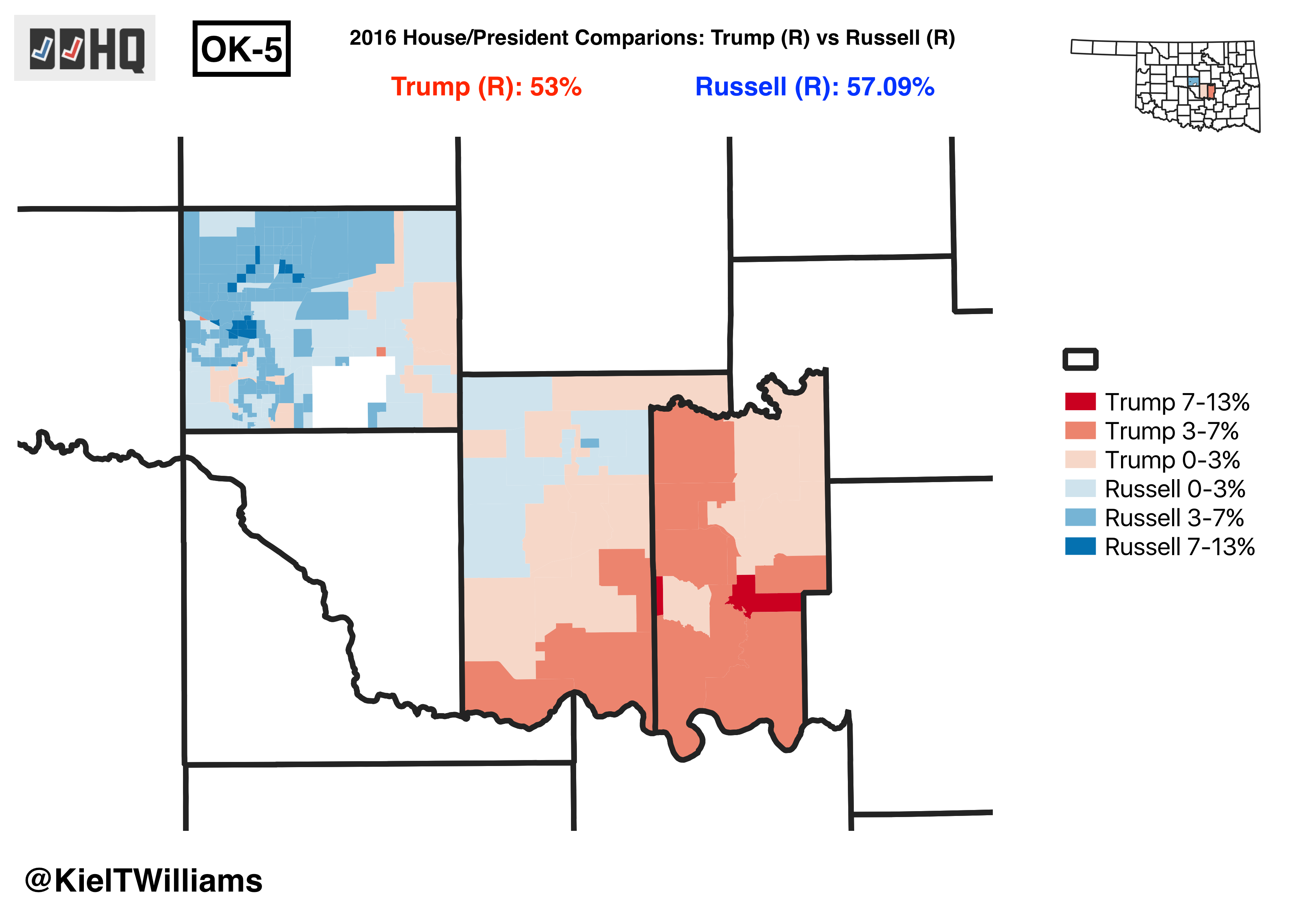
This weakness comes into focus when we compare Russell and Trump’s 2016 performances. While Trump was the preferred candidate in the rural eastern counties, Russell substantially outperformed him in Oklahoma City (where most OK-5 residents actually live). In particular, Russell did better in precincts just north of the city, where some suburban residents may have found Trump’s antics too much to take. If Democrats ever want to become competitive in this district, these northern Oklahoma county residents are the people they need to speak with.

As Rep. Russell coasted to renomination in this year’s Republican House primary, the Democratic side featured a pitched contest between nonprofit manager Kendra Horn and 2012 nominee Tom Guild. While Guild remained popular with rural Democrats, Horn swamped-him around Oklahoma City (though not by enough to clear 50%, and avoid this Tuesday’s run-off).

The most clear warning sign for the GOP in OK-5 thus far is the voter composition of the 2018 primary. Democrats narrowly outpaced Republicans in ballots-pulled, making significant headway in northern Oklahoma City, and winning by a substantial margin in Seminole county – perhaps on the back of Mary Fallin’s unpopularity. This 0.4-point deficit for the 2018 GOP contrasts with primary advantages of 20-, 33-, 11-points in 2010, 2014, and 2016 respectively (the 2012 primary seems to have been uncontested). If a Democrat were to carry this district, their map would probably need to look something like this – especially in the area around Oklahoma City.
Kendra Horn easily won her primary run-off on Tuesday night. This wasn’t a shock – Horn convincingly won most of the district during the first round of the primary, and she raised far more money than her opponent, Tom Guild. It’s likely that Guild’s first round performance rested mainly on name ID – he has mounted campaigns for the seat in 2010, 2012, 2014, 2016, and now 2018.
Democrats’ hopes for this district rest largely on just how high the fabled “Blue Wave” rises this November. The Øptimus legislative model is currently quite bullish on the GOP, giving them an 84% chance of retaining the seat.
(For additional background on OK-5, consider reading Noah Rudnick’s profile of the district from earlier this year.)